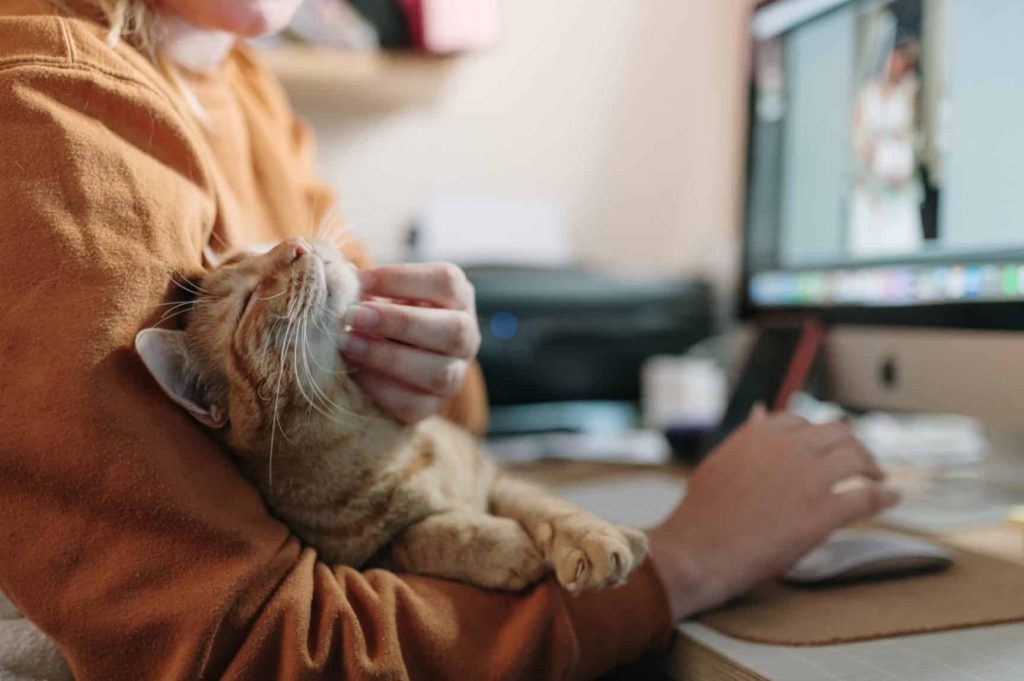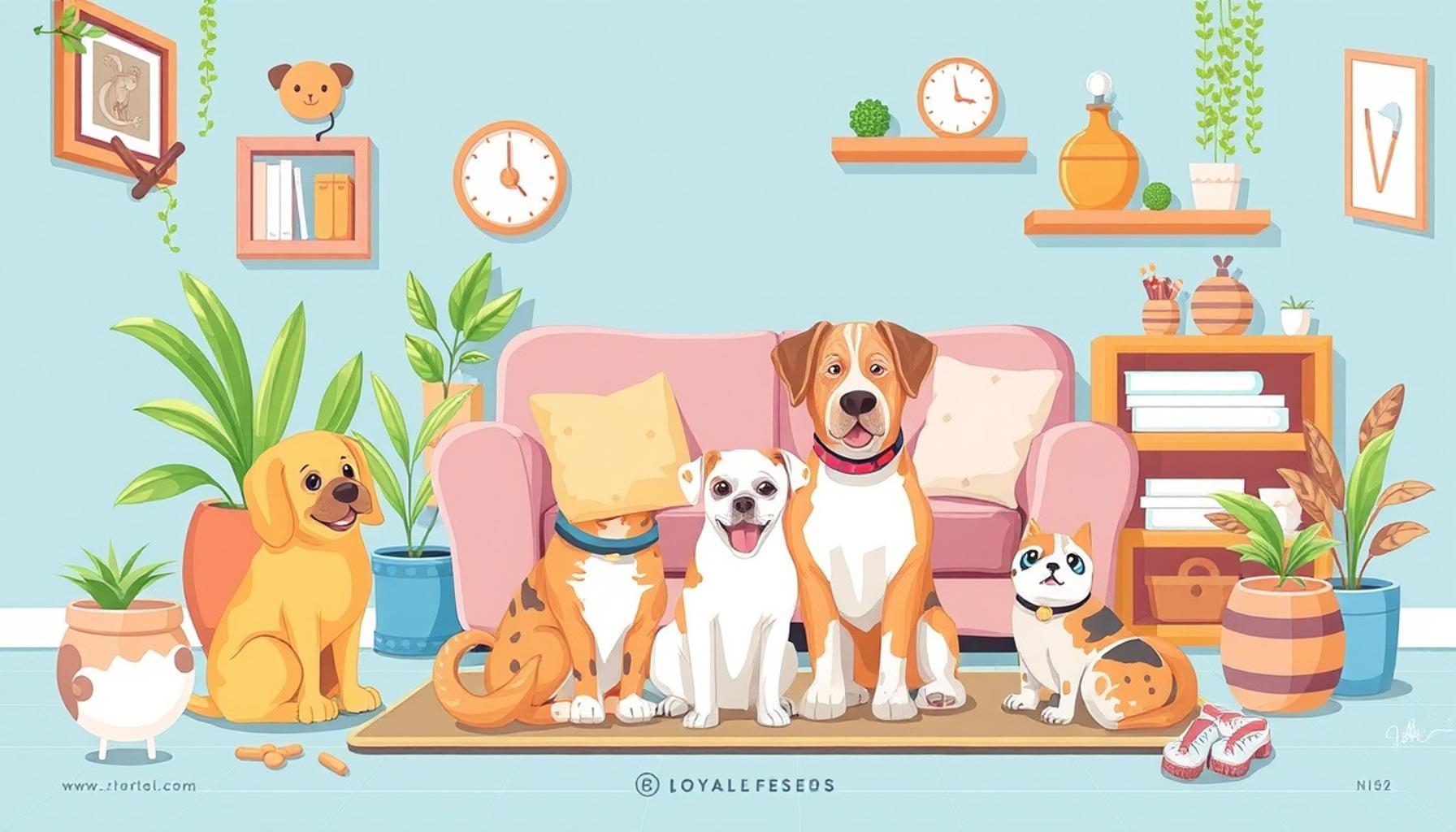Positive Training Techniques for Dogs and Cats: Building a Healthy Relationship with Your Pet

The Journey of Bonding with Your Pet
Establishing a loving relationship with your pet is not just about having an adorable companion; it is an enriching experience that begins with the art of communication. Positive training techniques form the backbone of this journey, creating a nurturing bond between humans and their furry counterparts. These methods promote not only desirable behavior but also cultivate trust, understanding, and mutual respect, leading to a more fulfilling pet ownership experience.
Key Aspects of Positive Training
The principles of positive training are grounded in behavioral psychology, focusing on encouraging the desired actions rather than punishing undesirable ones. Here are some critical components to consider:
- Reward-Based Techniques: Utilizing treats, verbal praise, and toys to reinforce good behavior is essential. For instance, if your dog sits on command, rewarding them with a favorite treat or enthusiastic praise can reinforce this behavior, making them more likely to repeat it. Similarly, for cats, using a feather toy as a reward when they use their scratching post can help shift their focus away from the furniture.
- Consistency: Employing the same commands and hand signals consistently is crucial in training. For example, if you use the command “come” sometimes and “here” at other times, your pet may become confused about what you expect them to do. Having a uniform approach not only avoids confusion but also establishes an atmosphere of reliability for your pet.
- Patience: Every animal learns at their own pace, and recognizing that learning takes time is vital. Just as a puppy may take longer to master basic commands than an adult dog, the same goes for cats adapting to indoor living. Celebrating small victories during training can motivate pets and solidify the bond between you.
In countries like Nigeria, where pets are cherished as family members, these positive training methods can significantly enhance the pet-human relationship. Research has suggested that animals trained using positive reinforcement techniques tend to show higher confidence levels and experience fewer behavioral issues, contributing to a peaceful household environment.
Species-Specific Training Approaches
While the core principles of kindness and encouragement apply universally, the training methods vary between different species. Dogs, for instance, are pack animals and often respond well to social cues and teamwork, making cooperative training sessions effective. In contrast, cats are generally more independent and may require a different approach, such as focusing on play-based techniques that tap into their natural hunting instincts.
As you continue to explore the fascinating world of pet training, reflect on these differences and consider how each animal’s unique behavior can influence training strategies. By respecting and nurturing the bonds we share with our beloved pets, we pave the way for richer interactions and deeper connections. Engaging with your pet through playful training can transform their behavior while strengthening your relationship, making the journey of pet ownership even more rewarding.

ADDITIONAL INSIGHTS: Expand your understanding here
Understanding the Foundations of Positive Training
The effectiveness of positive training techniques lies in their foundation of empathy and understanding. They focus on how your pet learns and perceives the world, allowing pet owners to engage with their animals in ways that not only address behavioral issues but also strengthen their bonds. The shift from traditional methods of training to positive reinforcement reflects a broader understanding of animal psychology. This approach is particularly vital in a diverse country like Nigeria, where varied lifestyles and cultures influence pet ownership.
The Importance of Motivation in Training
To harness the full potential of positive training, understanding your pet’s motivation is key. Each pet has unique drivers that can significantly influence their behavior during training sessions. Recognizing what your pet values can help you select the most effective rewards, thereby enhancing the learning experience. Common motivators include:
- Food: High-value treats, such as pieces of meat or specialized pet snacks, can be powerful motivators for both dogs and cats. Identifying what your pet finds most enticing can lead to more successful training sessions.
- Play: Engaging your pet in playtime can be an excellent reward for good behavior. Stimulating a dog’s playful nature with a favorite ball or allowing a cat to chase a toy mouse can foster a positive atmosphere.
- Attention: Pets thrive on attention, and verbal praise or affectionate petting can serve as an effective reinforcement. For many pets, the joy of connecting with their owner can motivate them to perform desired behaviors consistently.
In Nigeria, where communities often embrace animal companionship, incorporating local flavors into training can lead to better engagement. For example, using locally available treats like cooked fish for cats or small chunks of meat for dogs can create a more relatable training environment. Substituting standard pet treats with culturally relevant rewards draws on local familiarity, making the learning process more intuitive.
Catering to Individual Needs
While all pets require positive reinforcement, it’s essential to tailor training methods to suit individual temperaments and preferences. Not every dog responds similarly to the same command, nor do cats react the same way to training cues. Observing your pet’s responses will allow you to adapt your approach and find the perfect fit for their learning style. Take time to note their body language, vocalizations, and behavior during training to understand better how they process commands.
Moreover, engaging pets in social environments can offer a wealth of training opportunities. For instance, incorporating group training sessions at local parks can enhance your dog’s social skills while promoting healthy interactions. These settings provide not just a chance to learn but also to bond with other pet owners in the community, thus reinforcing a strong community of empathy and support for responsible pet ownership.
As we delve further into the realm of positive training techniques, remember that the journey of building a healthy relationship with your pet is an ongoing experience. By investing in their education through love, patience, and innovative strategies tailored to their individual needs, you create not just obedient animals but cherished companions that enrich your life.
| Category | Benefits |
|---|---|
| Effective Communication | Facilitates understanding of pet’s needs. |
| Bonding and Trust | Enhances the emotional connection between pet and owner. |
| Behavioral Improvements | Reduces negative behaviors effectively through reinforcement. |
| Stress Reduction | Promotes a calm and nurturing environment for pets. |
| Positive Associations | Creates enjoyable experiences related to training sessions. |
The application of positive training techniques not only reshapes the behavior of dogs and cats but also significantly enhances the way pet owners interact with their furry companions. By focusing on rewards and positive reinforcements, owners can foster an atmosphere that promotes effective communication, allowing them to understand their pets’ desires and needs better. Moreover, these approaches cultivate a sense of bonding and trust, essential for a long-lasting healthy relationship. As owners engage in consistent positive reinforcement, pets learn to associate training with enjoyable experiences, bridging any gaps in understanding and reducing behavioral issues.Another noteworthy benefit is the considerable stress reduction experienced by both pets and their owners. A calm demeanor nurtures a peaceful environment, making training sessions less daunting and more effective. Ultimately, when these techniques are utilized well, pets not only behave better but also lead a more fulfilling life alongside their humans. The journey of using positive training techniques opens the door to a fulfilling partnership with pets, encouraging readers to delve deeper into how these strategies can transform their interactions.
CHECK OUT: Click here to explore more
Enhancing Learning Through Consistency and Environment
Implementing positive training techniques is not solely about rewards; consistency in approach and the training environment plays an equally vital role in shaping your pet’s behavior. Animals thrive on predictability, and creating a structured routine can significantly reinforce their learning process. Maintaining regular training schedules, using the same commands, and applying consistent rewards will help your pet make direct associations between their actions and the corresponding outcomes.
The Role of the Environment
The environment in which training takes place can impact a pet’s focus and receptiveness. For instance, a quiet indoor space may be preferable for initial training sessions, where distractions are minimal. As your pet becomes more adept at commands, gradually introducing them to bustling outdoor environments can develop their adaptability and teach them to follow commands amidst distractions. In Nigeria, utilizing local parks or safe community areas can also create opportunities for training in a novel and engaging setting.
Moreover, clustering training sessions around daily routines can instill good habits. For example, incorporating basic commands like “sit” or “stay” during walks, meals, or playtime can enhance your pet’s understanding. When a dog learns to sit before getting their favorite treat, it not only reinforces the command but also emphasizes the correlation between behavior and reward, ultimately strengthening their bond with their owner.
Utilizing Clicker Training
Innovative training tools such as clickers can revolutionize the way you communicate with your pet. Clicker training involves using a small handheld device that makes a distinct sound, marking the precise moment your pet performs a desired behavior. This technique enhances clarity, allowing pets to recognize which actions are being rewarded. With specific timing and positive reinforcement, pets can grasp complex behaviors more swiftly, allowing for greater learning speed and retention.
Clicker training can be particularly effective in diverse cultural environments like Nigeria, where it opens doors to multi-faceted training experiences. For example, teaching a dog to fetch a locally made ball or having a cat learn to navigate through a maze using clicker cues incorporates daily life and local resources into the training, making it engaging and relatable.
Overcoming Behavioral Challenges
Positive training techniques can also aid in overcoming behavioral challenges often faced by pet owners. Animals, like humans, may exhibit anxiety, fearfulness, or behavioral issues stemming from past experiences or inadequate socialization. Approaching these challenges with patience and understanding can lead to meaningful change.
For dogs, socialization with other pets in designated play areas or controlled environments can promote confidence and reduce fear-based behaviors. Cats may benefit from gradual exposure to guests or new sounds, paired with reassurance and rewarding calm behavior. In Nigeria, leveraging community resources such as pet training centers or workshops can offer expert guidance, fostering a sense of community while establishing healthy behaviors in pets.
It is essential to remember that training is an ongoing journey, ripe with opportunities for growth for both owner and pet. The dedication to employing positive techniques ensures that you cultivate a nurturing relationship, paving the way for mutual respect and understanding. With each lesson learned, your bond with your four-legged companion strengthens, reflecting the essence of a harmonious pet-owner relationship in a vibrant societal context.
LEARN MORE: This related article may interest you
Conclusion: Nurturing Bonds Through Positive Training
In summary, adopting positive training techniques for dogs and cats is a transformative journey that significantly enhances the relationship between pets and their owners. By employing methods such as consistency, environmental considerations, and innovative tools like clicker training, pet owners can cultivate an effective training environment that promotes learning and good behavior. These techniques not only reinforce obedience but also enrich the emotional bond you share with your furry companions.
Moreover, the ability to address behavioral challenges through patience and positive reinforcement fosters a sense of security in your pets. Whether you are socializing a cautious dog in a community park or helping a shy cat adjust to new sounds at home, the emphasis on understanding and compassion builds trust and loyalty. In the vibrant context of Nigeria, the integration of local resources and community support further strengthens these training efforts, creating an enriching environment for both pets and their owners.
Ultimately, investing time and effort into positive training techniques pays dividends in the form of a harmonious and rewarding relationship with your pets. As you embark on this journey, remember that each small achievement contributes to a larger bond built on mutual respect and love. With dedicated practice, the skills you both develop will not only transform behavior but will also create cherished memories and understanding that lasts a lifetime. Thus, embracing positive training techniques is not just about teaching commands; it’s about nurturing a forever friendship with your beloved animals.


